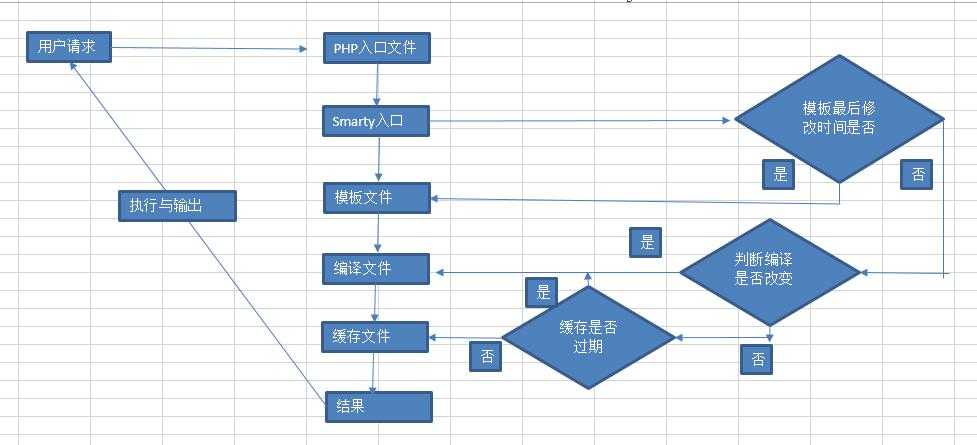标签:
IE缓存:就是把请求的数据放入IE等浏览器中(客户端缓存)
HTML+CSS+JS+IMG
Smarty缓存:服务器端缓存
1)减少服务器I/O
2)减少数据库服务器压力
3)减少服务器访问时间,加快反应速度
编译技术 < 缓存技术 < 静态技术(不方便管理)
示例代码:
//初始化信息(读取数据,设置默认路径) $smarty -> caching = true;//默认为false,如果要使用必须开启缓存开关 $smarty -> cache_lifetime = 3600;//单位为毫秒
1)缓存从何而来
说明:当我们删除缓存文件时,然后修改编译文件,重新访问同一页面时,系统会重新生成缓存文件,通过结果发现,缓存是由编译文件直接生成的。
2)缓存文件什么时候会自动更新
① 当缓存的生命周期过期时,系统将重新生成缓存
② 当模板发生变化时,缓存文件也会重新生成

1)缓存可以减少对数据库服务器的访问,减少数据库服务器的压力
通过以下方法即可解决
<?php header(“Content-Type:text/html;charset=utf-8″); require “smarty/Smarty.class.php”; $smarty = new Smarty(); //初始化信息(读取数据,设置默认路径) $smarty -> caching = true;//默认为false,如果要使用必须开启缓存开关 $smarty -> cache_lifetime = 3600;//单位为毫秒 if($smarty->isCached(“demo7.html”)){ $smarty -> display(“demo7.html”); exit; } echo “hello”; mysql_connect(“localhost”,’root’,”); mysql_query(“use xsphp”); mysql_query(‘set names utf8′); $sql = “select * from stu where id=100″; $res = mysql_query($sql); $row = mysql_fetch_assoc($res); $smarty -> assign(‘row’,$row); $smarty -> display(“demo7.html”);
运行以上代码可知,只有当我们第一次访问网址时,系统会输出hello,以后每次访问系统将自动转向缓存文件,从而达到减少数据库访问目的。
示例代码:
//定义一个函数,专门用于清理缓存,一般放置于管理系统的右上角
$smarty -> clearCache(“demo7.html”);//删除demo7页面缓存
$smarty -> clearAllCache();//删除所有缓存(管理系统右上角按钮)
http://localhost/20150602/demo08_cache.php?id=485
http://localhost/20150602/demo08_cache.php?id=489
http://localhost/20150602/demo08_cache.php?id=500
通过运行以上网址可知,只有当我们运行第一个页面时,系统才能正常显示,以后每次运行都自动显示第一次的执行结果。
如果解决以上问题?
答:可以通过以下方式解决(单页面多缓存)
$smarty->display(“tpl”, “cacheid”);我们可以把经常变化的变量放入display函数的第二个参数中,即可解决以上问题。
$smarty -> display(“demo7.html”,$id);
单页面多缓存一般用于内容页或详细页
标签:
原文地址:http://www.cnblogs.com/leigood/p/5033513.html